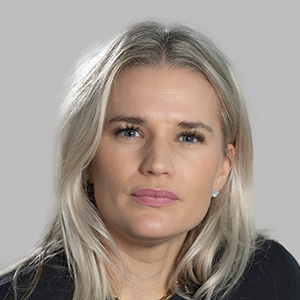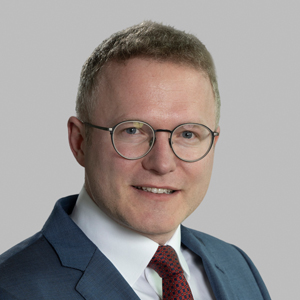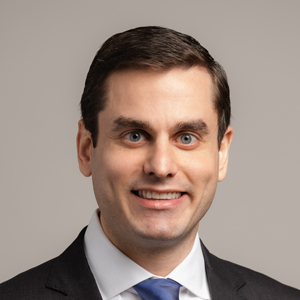
Cadwalader had a fantastic time at the Fund Finance Association's 14th Annual Global Fund Finance Symposium in Miami.
Read on for key takeaways from some standout panels!
Fund Finance Market Update
 |
Associate - Charlotte |
The 14th Annual Global Fund Finance Symposium kicked off on Monday with a much anticipated Fund Finance Market Update, hosted by Georgina Pullinger, Consultant at Appleby. The panel included Doug Cruikshank, Managing Partner & Founder of Hark Capital, Missy Dolski, Global Head of Capital Partners at Värde Partners, Monika Singh Sanford, Partner at Haynes Boone, Paul Schoper, Head of Fund Finance at Wells Fargo, and Richard Sehayek, Managing Director at Ares Management. Below are our key takeaways from the session:
- Most Significant Fund Finance Market Update: A Reenergized Market
Looking back at 2024, the overall sentiment of the panelists is that the Fund Finance market has been reenergized following the 2023 regional banking crisis. Panel participants highlighted the below trends from 2024:
- The Institutional Limited Partners Association’s (“ILPA”) issuance of guidance in 2024 (the “Guidance”), which is discussed in more detail here) for Limited Partners (“LPs”) and General Partners (GPs”) around the use of Net Asset Value (“NAV”) financing has led us into what Doug Cruikshank calls an “age of wisdom” around the product as lenders, private equity funds, LPs and GPs alike become more comfortable and confident in using NAV facilities as a financing tool, leading to an emergence of the product as a permanent asset class in the Fund Finance market.
- It’s a good time to be a borrower: as capital markets continue to grind, the Fund Finance market is generally experiencing pricing depression and a more favorable negotiating environment for borrowers. Several panelists noted an increased willingness by bank and non-bank lenders to provide more creative and flexible solutions for their borrower clients.
- In recent years past, the market experienced an increase of lending options leading to a surge of bank and non-bank lenders taking a “jack of all trades” approach to Fund Finance lending. On the other hand, 2024 brought more discipline to the market as lenders focused on more clearly defining their financing offerings and concentrating on their “bread and butter” products.
- New Players and a New Game
- Paul Schoper noted that the last two years introduced more innovation and change in the Fund Finance market than in the last ten years combined, as lenders focused on new tools to provide more capital on the most cost efficient basis.
- The market continues to see an uptick in non-bank lenders entering the market as private credit has made it more efficient to deliver capital while risk tolerance at traditional banks is reexamined.
- The market is becoming more sophisticated and there is an increased interest by borrowers and lenders in understanding the “long game” of a transaction and tailoring it to where it may eventually land (i.e. a capital relief trade or securitization).
- Missy Dolski noted that the innovation in the market is outpacing the availability of capital at banks, while banks are simultaneously seeking to narrow what business they want to be in to optimize their balance sheets. This landscape has led to borrowers and bank lenders looking to non-bank lenders to fill the gaps.
- Industry Reaction to ILPA Guidance
- ILPA’s release of the Guidance has helped draw the line between what is “good and evil” in NAV transactions, leading to a more standardized approach to NAV lending and ultimately a more universal comfort level around the product.
- Similar to the subscription facility market 10 years ago, we are seeing live the NAV market’s natural progression in the Fund Finance space as a permanent and accepted financing solution.
- Monika Singh Sanford noted that with the release of the Guidance, the market should expect to see more clarity in fund-governing documents in anticipation of prospective NAV financing.
- Predictions for 2025 couple
- Fundraising in the last couple of years has been slow, but participants expect to see this improve in 2025 as private wealth increases its appetite to engage with the market.
- We should expect to see increased activity amongst certain LP classes, particularly institutional investors and insurance companies, which will in turn promote a more robust financing space.
- Richard Sehayek noted that he predicts a lot more collaboration amongst market participants as the parties seek to maximize transactions by selecting and mixing the right pools of capital, which will lead to an explosion in different product offerings (i.e. collateralized fund obligations and GP facilities). The expectation amongst several panelists is that the increased collaboration will lead to a more formalized relationship between bank and non-bank lenders.
Lessons from Tom Brady - Get to Work!
 |
Associate - Charlotte |
The Sparkle East conference room was electric on Wednesday afternoon as Jeff Johnston introduced the one and only Tom Brady to the main stage. Before launching autographed footballs into the standing room-only crowd, the NFL superstar and current sportscaster spent a full hour sharing his life experience and words of advice.
Brady’s experience transcends sports. Themes of success, challenge and perseverance can be directly applied to our careers in fund finance. I found the following messages to be the most impactful:
- “There is no way to do better by doing less”
Brady described a slow start to his athletic career – always the backup quarterback working to earn a spot as the starter. He was ambitious and willing to put in the work. His advice to the audience was to work hard, develop competence in yourself, improve your standing and ultimately, accomplish your goals.
- “Shift your mindset”
As a backup quarterback on the New England Patriots, Brady explained that despite some self-doubt he made it a point to treat every practice like it was a championship game. His positive attitude and maximum effort had a ripple effect on his teammates.
To generate success, try shifting your mindset, and positive energy and enthusiasm will shift the mindset of your entire team. Brady encouraged everyone who wants to be a leader to dig deep, point the finger back at yourself and figure out what you need to do better in order to advance the team. Self-reflection will earn a lot of respect from your teammates.
- “The teacher appears when the student is ready”
Brady credits his success in part to the coaches and mentors he’s had throughout his career. He advised that we should all be so humble as to never think we are the best. Humility is essential to maximizing your potential and mentorship is a key to success.
The Future of Securization in Fund Finance
 |
Special Counsel - Charlotte |
The second day of the conference saw a well-attended panel discussion tackling one of the hottest topics in Fund Finance last year – one which appears likely to continue as a prominent source of conversation and focus in 2025 and beyond. Cadwalader Partner Jed Miller moderated a panel discussing “The Future of Securitization in Fund Finance”. Jed was joined by Samantha Rapaport (Churchill Asset Management), Adam Risell (Simpson Thacher & Bartlett LLP), Matthew Ruggiero (PJT Partners), Angela Ulum (Mayer Brown) and Vassiliyan Zanev (Loyens & Loeff).
The panel began with a brief discussion of the current state of the market and set the stage for predictions about future use and development of securitization in fund finance. Panelists explained that securitization is essentially a portfolio of profit-producing assets accompanied by the issuance of various traches of debt. As interest has increased in tapping into the capital markets to address various problems, the market has turned to established securitization products in search of solutions. The fund finance space borrows and modifies existing, well-established securitization technology and applies it to portfolios of subscription credit facilities.
Panelist also posited that the primary advantage of securitization (at least currently) is to provide efficiency for both sponsors and investors. These products allow limited partners to obtain access to desirable assets that might otherwise be unavailable in their current form. Further, one panelist noted that the principal genesis of approaching fund finance from this perspective is to provide access to insurance companies who need rated products to be capital efficient. The securitization structure provides a long-term fixed-rate product with predictable rates of return – features that are crucial to the insurance industry. Further, these products provide much needed variation, which allows insurance companies to demonstrate risk diversification to regulators.
The conversation then turned to the future of securitization in fund finance. One panelist acknowledged certain headwinds, including increased regulatory examination. However, panelists tended to agree that thoughtful examination will ultimately be a positive as these products become increasingly familiar and correspondingly, increasingly utilized. The speakers universally voiced confidence that there is tremendous room for growth in this space. Further, as these structures become more common, and as more deals are executed, several panelists expressed optimism that we will see a further acceleration of the technology in the fund finance industry.
Following a whirlwind discussion, there was only time for one question from the audience, which came from a ratings agency attendee. When asked about the biggest impediment to adoption of these products, panelists cited lack of familiarity with the structures and identifying investors interested in buying into a newer product (particularly on the equity side of these structures).
While still a developing market, the panelists universally expressed optimism that growth in the area seems imminent. In addition familiarity, successful precedents and innovation in securitization will strengthen both the product and the demand for it. The consensus among the speakers was that 2025 will see a continuation of the breakout period for securitization as a fund finance product.
Trends and Innovation in Secondary NAV Lending
 |
Associate - London |
This panel brought together a group of industry experts to discuss developments and trends in the NAV secondaries market, as well as the opportunities and challenges facing this space. The panelists included: Aditi Iyer, a partner at Kirkland & Ellis LLP; Apoorva Joshi, a director at Aedian; Josh Kinsey, an MD at EverBank; Natasha Puri, a director at Lloyds Bank; and Leon Stephenson, a partner at Reed Smith LLP.
The panel noted that while there has been a growing appetite for NAV facilities holding underlying assets in LP interests, the fundamental appeal of this space has not changed significantly over the past few years. Specifically, lenders continue to value the diversified nature of LP interest pools, where multiple cash flow avenues exist.
There was also discussion around the various uses of these facilities, most notably for acquisition financing, recapitalization financing, and strategic applications in so-called “overcommitment” scenarios. The somewhat controversial topic of using NAV facilities for distributions was raised, with panelists agreeing that this may be strategically appropriate depending on the fund’s life cycle—particularly when there is still significant cash flow from LPs. As has been discussed in various panels throughout the conference, the panel emphasized that the use of these facilities should always align with the fund’s strategy and be executed transparently with LPs.
Other highlighted trends included the use of term loans, delayed drawdowns, evergreen funds, and the increasing role of insurance capital. The panel concluded on a positive note, citing a steady increase in new fundraisings, an uptick in deal flow, and rising demand for these types of facilities.
Non-Bank Lender Perspectives in Fund Finance
 |
Counsel - New York |
This panel discussed the increasing role of non-bank lenders in the fund finance space and the types opportunities conducive, and attractive, to non-bank lenders. The panel was a good mix of different perspectives on the topic, with lawyers Jinyoung Joo and Ryan Moreno, partners at Proskauer and DLA Piper, respectively, Michael Spera from the borrower side at GSAM, Dadong Yan of Barings and Jasen Yang of Apollo representing the non-bank lenders and Nick Zangari of SocGen for the banks.
The panel noted that many of the opportunities are complementary to, rather than in competition with, traditional bank lenders. NAV lending was given as an example of a product where non-bank lenders may be in a better position to provide financing than many bank lenders, and it was mentioned that these products are in some ways an adjacent activity to the work non-bank lenders have been doing in structure credit for decades. Other areas seen as being a good fit for non-bank lenders are products that present different types of complexity and necessary customization – whether based on characteristics of the underlying assets, the duration required or specific terms – that lend themselves to a bespoke bilateral transaction. One example given of this was GP financing – providing financing to asset managers, which requires solutions tailored to the specific asset manager.
There was also a discussion of the emergence of non-bank lenders into the sub-line space. While it was noted that there may have been some capacity constraints in this area from the banks, that is not the only (or even the main) source of the opportunity, as pricing, access to information and volatility in the bank lender market are all factors here. Even here, though, the non-bank lenders aren’t necessarily competing with the banks who lead the sub-line deals, often coming in as participants.
More on the complementary side, the non-bank lenders especially noted that they are not necessarily looking for the same thing out of the sponsor relationship that the banks are – they aren’t looking for deposits, FX, derivatives or investment banking products – so they are able to work with the banks and together meet their clients’ needs.
One panelist noted that, while recognizing banks and non-bank lenders are often in direct competition, there is more perceived competition than what actually exists, as the product the sponsor is looking for lends itself to one or the other type of lender. One area that the panelists generally agreed upon was a cautious optimism for the market and the industry – whether due to an improving fundraising environment or changes in exit opportunities and the capital markets, but noting the existence of externalities and increased competition – for both bank and non-bank lenders.
Private Credit: Navigating the Golden Age
 |
Associate - London |
Market Trends
The outlook for private credit remains positive, and a consensus of the panel is that private credit is poised to grow significantly. Incumbent banks are shifting their focus on cooperation with sponsors, which can also be evidenced by a number of new partnerships recently announced. In terms of the further adoption of private credit, the panel broadly agreed that private credit is still nascent, with further education in the area being desired to promote its widespread acceptance. Whilst the private credit market continues to be heavily dominated by and funded by institutional investors, there is also an increasing tendency for new entrants, including retail investors, to play a bigger role.
Further, the market update points to increasingly more private credit capital chasing new deals, leading to a general compression of spreads. A notable observation has been made by the panel that increased competition largely also impacts the documentation, with some participants expressing their views on the general deterioration of covenants and relative strength of lender positions in the finance documents.
Bank/Sponsor Partnerships
Private credit players (in particular institutional investors and insurance companies) partnering with banks continues with increasing traction. Generally, this trend seems to be mutually beneficial, with private credit being able to leverage on the vast origination capacity of banks and conversely, banks benefiting from the ability to keep the risk they want to keep on their books and passing other parts of exposures to other market participants.
A word of caution has been made in respect of the wave of new partnerships that were announced recently, so that those do not become ‘situationships’. Whilst every partnership is different, according to the panel, it is important to focus on alignment of interests between the banks and private credit participants as well as on internal processes. The latter involves active participation in pipeline meetings and streamlining of processes, among other things. With this trend being a new and evolving phenomenon, the panel expressed its view that it will be interesting to see how successful this model will become.
Other (New) Entrants
Whilst the market continues to be dominated by institutional investors, there is much space for innovation and new entrants. Generally, there is an influx of other participants, insurers (in particular, given their diversification needs and a better fit of the private credit than the private equity in terms of modeling and better predictability of cashflows) and High Net Worth Individuals. In addition, there are signs of retail investors entering this segment, with some panelists referring even to the potential ‘retailisation’ of the private credit. The consensus among panelists was that the market will continue to evolve and search for innovations in this space to accommodate other less traditional players coming into the private credit space.
Syndications Update
 |
Counsel - Charlotte |
Much like in years past, lenders continue to view subscription lending as an attractive and safe product to build out their lending pipelines. The syndications panel mostly echoed this sentiment, even noting that it is no longer just traditional banks that are actively looking to participate in the space, but also insurance companies and private credit as well. Also discussed is that the product is now evolving to no longer be limited to solely revolving lines of credit but is starting to include the flexibility to provide loans with a term tranche component in addition to a revolving component for a credit facility. The addition of term loan components will broaden the types of lenders who can lend under a credit facility who might otherwise be excluded from being in the subscription line space.
However, as many new participants enter into the market, banks are noting there has started to become a supply (the size of commitments lenders are willing to provide) and demand (the size of the commitments the sponsors need and/or can support) imbalance. Banks have become more willing to deploy larger amounts of capital, especially to top tier sponsors, but with fundraising having slowed down, the demand from the sponsor side has become more tepid. Additionally, because lenders are willing to lend larger amounts, top tier sponsors are also becoming much more selective on the lenders they select to become part of their larger syndicated deals. The general sentiment seemed to be that this imbalance is expected to come back into equilibrium towards Q3 and Q4 as fundraising improves for sponsors and demand for loans increases.
Overall, the belief is that things are looking positive for the syndications market in the long term. Here is hoping to another strong year!
NAV Lending to Buyout Funds
 |
Associate - New York |
Panel: Oliver Dunsche (Deutsche Bank), Teodor Gjika (Citi), Dane Graham (17Capital), Eric Neglia (KBRA), Sherri Snelson (White & Case) and Ramya Tiller (Debevoise & Plimpton)
Latest Evolution
NAV lending to "buyout" funds (i.e., private equity funds that purchase a majority or controlling interest in underlying portfolio companies) continues to grow through the resurgence in the capital markets. In the wake of the Covid-19 pandemic, the pressure on the capital markets and the need for buyout fund managers to use NAV facilities to support obligations to their portfolio companies (often facing financial constraints) were initial drivers of growth. The rising interest rate environment also increased costs of the more traditional forms of portfolio financing, leading managers to look to alternatives sources such as NAV loan facilities to meet their capital needs. The panelists discussed that the portfolio companies comprising those buyout funds benefitted from the NAV loans and the buyout fund managers (and their investors) are increasingly seeing the benefits of that value creation.
Rating Agency Metrics
The data is further supported by KBRA, who has issued ratings for over 100 NAV facilities since 2021 (and 31 in 2024 alone), approximately 50% of which were to primary private equity funds. According to KBRA, the estimated size of NAV loans to private equity funds grew to over $50 billion as of October 2024, and NAV loan usage is expected to grow sixfold by 2030. With respect to the ratings criteria, KBRA is looking at several qualitative factors, including but not limited to the collateral package, asset quality, asset coverage ("LTV"), cash flows and repayment abilities upon a default or other stressed scenario.
Lender Perspectives and Considerations
Both traditional and non-bank lenders remain active in the buyout fund lending space (although Dane Graham touted that 17Capital is “the OG” for such NAV facilities). The traditional banks are focused more on the large sponsors with more diversified portfolios, whereas the non-bank lenders have been more willing to underwrite smaller managers with fewer underlying companies in their portfolios. Additional considerations from the panelists’ perspectives included the following:
- Expected cash flows and loan repayment mechanics (e.g., cash sweeps);
- restrictions on any intermediate holding vehicles in the structure, including prohibitions on cross-collateralization, guarantees and other forms of debt;
- whether an enforcement by the lender could negatively impact the value of the portfolio (e.g., if this could trigger a "change of control" event further down the structure);
- whether there would be an orderly unwind and controlled sale process upon an enforcement; and
- the valuation methodology utilized by the sponsor and any dispute rights available to the lender if there is a disagreement on a valuation.
The variety of use cases for NAV loans to buyout funds have shown that these facilities are much more about generating liquidity, supporting the portfolio companies and making follow-on investments than they are for making distributions to investors by monetizing the value of the portfolios. The adoption of NAV loans in the capital structure of buyout funds will continue grow alongside the increased transparency and investor awareness of this being an important tool for creating value and driving growth.




